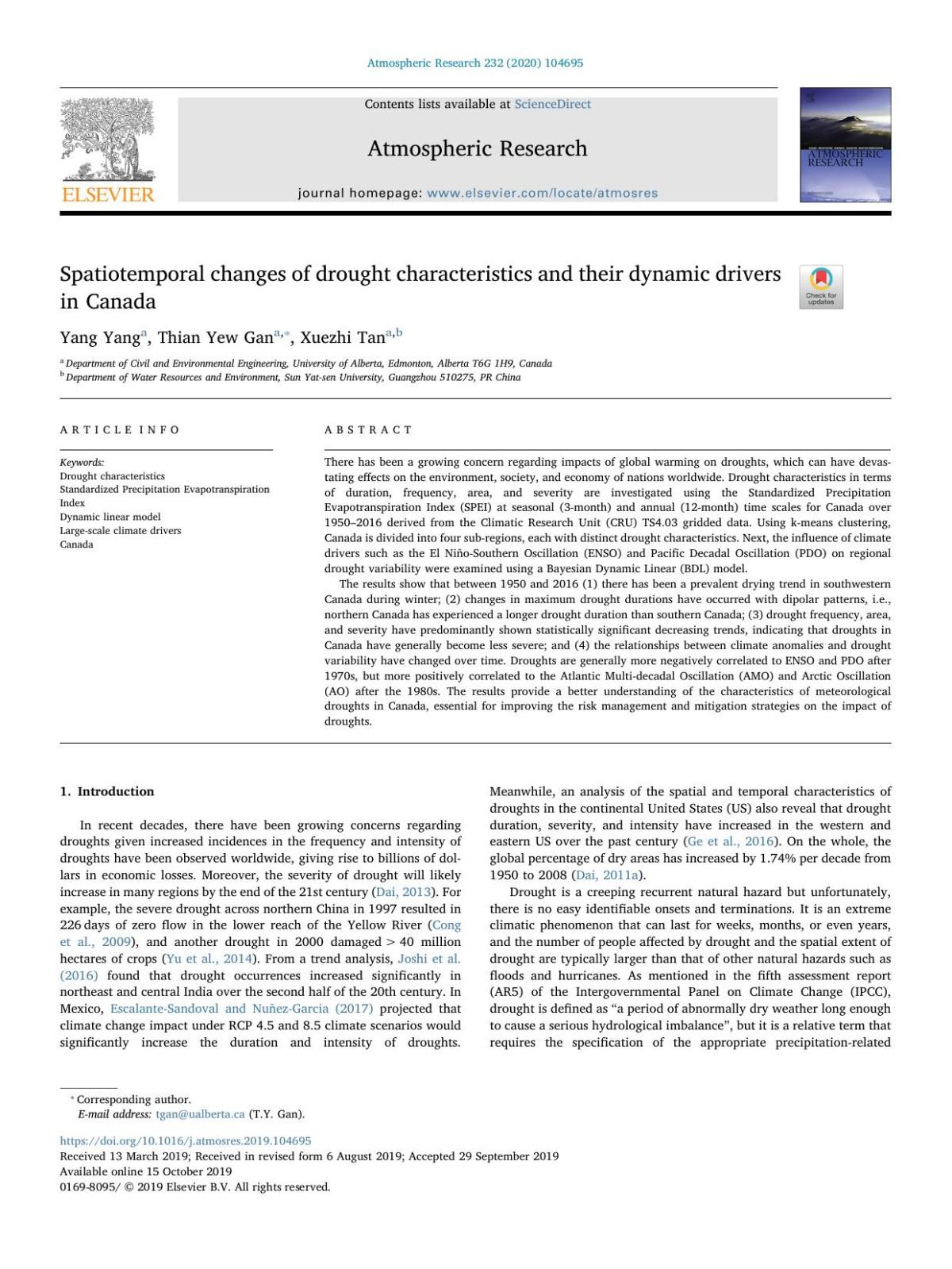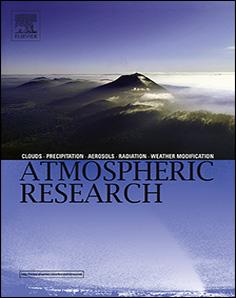https://ebookmass.com/product/spatiotemporal-

More products digital (pdf, epub, mobi) instant download maybe you interests ...

Elsevier Weekblad - Week 26 - 2022 Gebruiker
https://ebookmass.com/product/elsevier-weekbladweek-26-2022-gebruiker/

Jock Seeks Geek: The Holidates Series Book #26 Jill Brashear
https://ebookmass.com/product/jock-seeks-geek-the-holidatesseries-book-26-jill-brashear/

The New York Review of Books – N. 09, May 26 2022
Various Authors
https://ebookmass.com/product/the-new-york-review-ofbooks-n-09-may-26-2022-various-authors/

Synthesis, Modelling and Characterization of 2D Materials and their Heterostructures (Micro and Nano Technologies) 1st Edition Eui-Hyeok Yang (Editor)
https://ebookmass.com/product/synthesis-modelling-andcharacterization-of-2d-materials-and-their-heterostructuresmicro-and-nano-technologies-1st-edition-eui-hyeok-yang-editor/

E-Paper Displays Bo Ru Yang
https://ebookmass.com/product/e-paper-displays-bo-ru-yang/

Multimaterial 3D Printing Technology Jiquan Yang
https://ebookmass.com/product/multimaterial-3d-printingtechnology-jiquan-yang/

Advanced Polyimide Materials Shi-Yong Yang
https://ebookmass.com/product/advanced-polyimide-materials-shiyong-yang/

Mathematical Physics with Differential Equations Yisong. Yang
https://ebookmass.com/product/mathematical-physics-withdifferential-equations-yisong-yang/

Pavement Analysis and Design (2nd Edition) Yang H. Huang
https://ebookmass.com/product/pavement-analysis-and-design-2ndedition-yang-h-huang/

AtmosphericResearch
journalhomepage: www.elsevier.com/locate/atmosres
Spatiotemporalchangesofdroughtcharacteristicsandtheirdynamicdrivers inCanada
YangYanga,ThianYewGana,⁎,XuezhiTana,b
a DepartmentofCivilandEnvironmentalEngineering,UniversityofAlberta,Edmonton,AlbertaT6G1H9,Canada
b DepartmentofWaterResourcesandEnvironment,SunYat-senUniversity,Guangzhou510275,PRChina
ARTICLEINFO
Keywords:
Droughtcharacteristics
StandardizedPrecipitationEvapotranspiration Index
Dynamiclinearmodel
Large-scaleclimatedrivers Canada


ABSTRACT
Therehasbeenagrowingconcernregardingimpactsofglobalwarmingondroughts,whichcanhavedevastatingeffectsontheenvironment,society,andeconomyofnationsworldwide.Droughtcharacteristicsinterms ofduration,frequency,area,andseverityareinvestigatedusingtheStandardizedPrecipitation EvapotranspirationIndex(SPEI)atseasonal(3-month)andannual(12-month)timescalesforCanadaover 1950–2016derivedfromtheClimaticResearchUnit(CRU)TS4.03griddeddata.Usingk-meansclustering, Canadaisdividedintofoursub-regions,eachwithdistinctdroughtcharacteristics.Next,theinfluenceofclimate driverssuchastheElNiño-SouthernOscillation(ENSO)andPacificDecadalOscillation(PDO)onregional droughtvariabilitywereexaminedusingaBayesianDynamicLinear(BDL)model.
Theresultsshowthatbetween1950and2016(1)therehasbeenaprevalentdryingtrendinsouthwestern Canadaduringwinter;(2)changesinmaximumdroughtdurationshaveoccurredwithdipolarpatterns,i.e., northernCanadahasexperiencedalongerdroughtdurationthansouthernCanada;(3)droughtfrequency,area, andseverityhavepredominantlyshownstatisticallysignificantdecreasingtrends,indicatingthatdroughtsin Canadahavegenerallybecomelesssevere;and(4)therelationshipsbetweenclimateanomaliesanddrought variabilityhavechangedovertime.DroughtsaregenerallymorenegativelycorrelatedtoENSOandPDOafter 1970s,butmorepositivelycorrelatedtotheAtlanticMulti-decadalOscillation(AMO)andArcticOscillation (AO)afterthe1980s.Theresultsprovideabetterunderstandingofthecharacteristicsofmeteorological droughtsinCanada,essentialforimprovingtheriskmanagementandmitigationstrategiesontheimpactof droughts.
1.Introduction
Inrecentdecades,therehavebeengrowingconcernsregarding droughtsgivenincreasedincidencesinthefrequencyandintensityof droughtshavebeenobservedworldwide,givingrisetobillionsofdollarsineconomiclosses.Moreover,theseverityofdroughtwilllikely increaseinmanyregionsbytheendofthe21stcentury(Dai,2013).For example,theseveredroughtacrossnorthernChinain1997resultedin 226daysofzero flowinthelowerreachoftheYellowRiver(Cong etal.,2009),andanotherdroughtin2000damaged>40million hectaresofcrops(Yuetal.,2014).Fromatrendanalysis, Joshietal. (2016) foundthatdroughtoccurrencesincreasedsignificantlyin northeastandcentralIndiaoverthesecondhalfofthe20thcentury.In Mexico, Escalante-SandovalandNuñez-Garcia(2017) projectedthat climatechangeimpactunderRCP4.5and8.5climatescenarioswould significantlyincreasethedurationandintensityofdroughts.
⁎ Correspondingauthor.
E-mailaddress: tgan@ualberta.ca (T.Y.Gan).
https://doi.org/10.1016/j.atmosres.2019.104695
Meanwhile,ananalysisofthespatialandtemporalcharacteristicsof droughtsinthecontinentalUnitedStates(US)alsorevealthatdrought duration,severity,andintensityhaveincreasedinthewesternand easternUSoverthepastcentury(Geetal.,2016).Onthewhole,the globalpercentageofdryareashasincreasedby1.74%perdecadefrom 1950to2008(Dai,2011a).
Droughtisacreepingrecurrentnaturalhazardbutunfortunately, thereisnoeasyidentifiableonsetsandterminations.Itisanextreme climaticphenomenonthatcanlastforweeks,months,orevenyears, andthenumberofpeopleaffectedbydroughtandthespatialextentof droughtaretypicallylargerthanthatofothernaturalhazardssuchas floodsandhurricanes.Asmentionedinthe fifthassessmentreport (AR5)oftheIntergovernmentalPanelonClimateChange(IPCC), droughtisdefinedas “aperiodofabnormallydryweatherlongenough tocauseaserioushydrologicalimbalance”,butitisarelativetermthat requiresthespecificationoftheappropriateprecipitation-related
Received13March2019;Receivedinrevisedform6August2019;Accepted29September2019
Availableonline15October2019
0169-8095/©2019ElsevierB.V.Allrightsreserved.
activity(IPCC,2014).
WilhiteandGlantz(1985) classifieddroughtsintofourcategories: a)meteorologicaldrought,b)hydrologicdrought,c)agricultural drought,andd)socio-economicdrought.Thisstudywillfocusonmeteorologicaldrought,whichisdefinedasadeficiencyofprecipitation acrossaregionduringacertaintimeperiod,asitisaprecursorof hydrological,agricultural,andsocio-economicdroughts.Toquantifya drought,droughtindiceshavebeenwidelyappliedbecausetheycan provideacomprehensivedelineationofdrought,makingdrought characteristicssuchasduration,severity,andintensitymeasurable (Jiangetal.,2014a,2014b).Moreimportantly,theseindicesallowfor directcomparisonbetweenregionsofdifferentclimaticconditions.The commonlyusedmeteorologicaldroughtindicesincludethePalmer DroughtSeverityIndex(PDSI)(Palmer,1965),theCropMoistureIndex (CMI)(Palmer,1968),theStandardizedPrecipitationIndex(SPI) (Mckeeetal.,1993),theReconnaissanceDroughtIndex(RDI)(Tsakiris etal.,2007),theStandardizedPrecipitationEvapotranspirationIndex (SPEI)(Vicente-Serranoetal.,2010),andtheWaterSurplusVariability Index(WSVI)(GocicandTrajkovic,2015).
Specifically,inCanada,droughtshavebeenidentifiedasoneofthe mostdamagingnaturaldisastersthathaveenormousimpactsonagriculture,industry,municipalservices,andhumanhealth,amongother sectors.Forexample,the2001–2002droughtintheCanadianPrairies (CP)sweptalmosttheentiresouthernpartofthecountry,anditwas oneofthetoptenworstdroughtsobservedovertheinstrumental period.InAlberta,cropproducerslost$413millionand$1.33billionin 2001and2002,respectively,whiletheestimatedreductionincrop productioninSaskatchewanaccountedforlossesof$925millionand $1.49billionin2001and2002,respectively(Wheatonetal.,2008). Furthermore,thedroughtthatoccurredinthespringandsummerof 2015isnoteworthyintermsofitsseverity,extent,andimpacts.Large areasinsouthernBritishColumbiawereassignedthehighestdrought rating,andtheAlbertagovernmentdesignatedtheprovinceasan AgriculturalDisasterArea(Szetoetal.,2016).Moreover,theextreme dryandwarmconditionsledtooneofthemostactiveandpersistent wildfireseasonsforwesternCanada,andsomeriversexperiencedtheir lowesthistoric flowlevelsin100years(CMOS,2016).
Theseaforementionedoverwhelmingdroughthazardshavebeenof majorconcerntoboththeCanadiangovernmentandthegeneralpublic inrecentdecades.Asaresult,manystudieshaveevaluatedthedryness orwetnessvariationsoverCanadausingdifferentdroughtindices.For example, QuiringandPapakryiakou(2003) comparedfouragricultural droughtindices,whoseresultsrevealedthattheZ-index(derivedfrom thePalmermodel)wasbetterformeasuringagriculturaldroughtand predictingcropyieldduringgrowingseasonsfrom1920to1999. GobenaandGan(2013) whoassessedthetrendinsummermoisture availabilityinwesternCanadausingthesc_PDSIdetectedasignificant increasingdrynessandwetnessintheCPandwestofthecontinental divide,respectively,from1950to2003. Bonsaletal.(2012),afterassessingthevariabilityofsummerdroughtdurationandintensityinthe CPusingPDSIandSPI,advocatedthenecessitytoconsiderthepotential impactofclimatewarminginstudiesrelatedtofuturedroughtsofCP. VariousstudieshavebeenconductedregardingdroughtsintheCP,but so faronlylimitedresearchhasbeenconductedtoexaminethedrought characteristicsacrossCanada.Eventhough Asongetal.(2018) investigatedthecoherencebetweenCanadiandroughtandlarge-scale climateoscillationsusingwaveletanalysis,thedynamicandtimevaryingrelationshipsbetweenlarge-scaleclimatesignalsandCanadian droughtcharactershaveyettobeexamined.
Therefore,theobjectivesofthisstudyareto(1)assessthespatial andtemporalvariabilityofdroughtduration,frequency,area,andseverityinCanadafrom1950to2016;(2)identifysubregionscharacterizedbydistinctdroughtbehaviors;and(3)investigatethedynamiceffectsoflarge-scaleclimatedriversondroughtsinCanada.The paperisorganizedasfollows.Thedataandmethodsaredescribedin Section2,while Sections3and4 providetheresultsanddiscussion,
respectively.Summaryandconclusionsarepresentedin Section5.
2.Dataandmethods
2.1.Data
Inthisstudy,weusedtheSPEIfordroughtidentificationandevaluation.Themonthlyprecipitationandpotentialevapotranspiration datafrom1950to2016withaspatialresolutionof0.5°×0.5°were obtainedfromtheCRUTS4.03(http://www.cru.uea.ac.uk/data/ ).The CRUTSdatasethasbeenadoptedbyIPCCasithasundergonestrict timeuniformitytestsindatareconstruction,hasahighspatialresolution,andalongtimeseries(Wangetal.,2014).Potentialevapotranspiration(PET)istakenfromtheCRUTSdataset,inwhichPETwas estimatedusingtheFAO-56Penman-Monteithmethod(Harrisetal., 2014)consideredtobeanaccurateandrobustPETequation.
TheCRUdatasethasbeenwidelyappliedindroughtanalysis.For example, GuenangandMkankamKamga(2014) foundthattheSPI calculatedusingtheCRUexhibitssimilarresultswiththosecalculated fromstationdatainCameroonfrom1951to2005.BasedontheCRU dataset, Guoetal.(2018) examineddroughtsinCentralAsiaover 1966–2015anddetectedadryingtendencyafter2003. Huetal.(2018) foundthattheCRUdatasetperformedbetterincapturingdrought eventsincentralAsiathantheGlobalPrecipitationClimatologyCentre (GPCC)andWillmottandMatsuura(WM)precipitationdatasets.In addition, GobenaandGan(2013) usedgriddedvaporpressure,cloud cover,andwindspeeddatafromtheCRUdatasettocalculatePETin westernCanada.TheCRUdatasethasalsobeenusedtovalidatemodel simulatedprecipitationanddroughtcharacteristicsovertheCP (PaiMazumderetal.,2013). SwainandHayhoe(2015) usedtheCRU datatocomputehistoricalSPIindextoassesshowspringandsummer droughtwillchangeoverNorthAmerica.Bycomparingofeightgridded datasets(CANGRD,CRU-TS3.1,CRUTEM4.1,GISTEMP,GPCC,GPCP, HadCRUT3,andUDEL)witheightreanalysesdatasets(20CR,CFSR, ERA-40,ERA-Interim,JRA25,MERRA,NARR,andNCEP2)forthe CanadianArctic, Rapaić etal.(2015) foundthatCRUTS3.1agreedmost closelywithCANGRDinallseasons.
Tostudytheinfluenceofvariousclimateanomaliesondrought conditions,weinvestigatedtheinfluenceofclimateanomalieson droughtsofCanada,particularlyhowcertainlarge-scaleclimateoscillationshavecontributedtotheprecipitationandtemperaturevariabilityofCanada(Coulibaly,2006; Jiangetal.,2014a,2014b; Yang etal.,2019).Forexample,monthlyindicesofENSO,PDO(https:// www.esrl.noaa.gov/psd/gcos_wgsp/Timeseries/ ),Pacific-NorthAmericanOscillation(PNA),AtlanticMulti-decadalOscillation(AMO), Arctic Oscillation(AO)(https://www.esrl.noaa.gov/psd/data/ climateindices/list/),andsolaractivityrepresentedbysunspots (http://sidc.oma.be/index.php3 )wereselected.
2.2.Therunstheory
Diversedroughtconditionsarecharacterizedintermsoffrequency, duration,severity,andintensity.Toprovideananalyticalsolutionto droughtevents, Yevjevich(1967) proposedtherunstheoryforidentifyingdroughtparameters.Arunisdefinedasaportionofthetime seriesofavariable,inwhichallvaluesareeitherlessorgreaterthanthe selectedtruncatedvalue;accordingly,itisreferredtoaseitheranegativeorapositiverun.Droughtfrequency(DF)isthenumberof droughteventsoccurredintheperiodconsidered;droughtduration (DD),expressedinmonths,isthedurationinwhichadroughtparameteriscontinuouslylessthanthecriticallevel;anddroughtseverity (DS)isthecumulativedeficitofadroughtparameterbelowthecritical level.Detailsaboutvariablestodescribedroughtsaregivenin Mishra andSingh(2010)
2.3.Thestandardizedprecipitationevapotranspirationindex(SPEI)
PDSIisamilestoneinthedevelopmentofdroughtindicesasitintegratespriorprecipitation,moisturesupply,runoff,andevaporation demandatthesurfacelevel.Nevertheless,itsuffersfromhavinga fixed temporalscaleandanautoregressivecharacteristic,wherebyindex valueshavealong-termmemoryofpreviousconditions(VicenteSerranoetal.,2010),evenwiththeimprovedsc_PDSI.TheSPI,transformedfromaprecipitationtimeseriesusingaprobabilisticmethod, canbeestimatedatdifferenttimescaleswhichallowdroughteventsto becomparedacrosstimeandspace.However,SPIiscriticizedforonly usingprecipitationdatawithoutincludingotherimportantclimate variablessuchastemperature,waterbalance,andwindspeedthat couldalsocontributetodroughts.
ToaddresstheshortcomingofSPI,SPEIisdevisedtocombinethe multi-temporalnatureofSPIandthesensitivityofPDSIinprovidinga morecomprehensiveapproachtoinvestigatetheeffectofglobal warmingondroughtconditions.Inthisstudy,SPEIisbasedonmonthly climaticwaterbalance,thedifferencebetweenprecipitationandpotentialevapotranspiration.(Vicente-Serranoetal.,2010).SinceSPEI couldindicatewaterdeficitscausednotonlybyprecipitationshortages butalsobyexcessiveevapotranspiration,itisarobustindexfordrought monitoringandanalysisinthecontextofclimatechangeatglobaland regionalscales.DetailsaboutSPEIhavebeenextensivelydescribed (Vicente-Serranoetal.,2010).Onaglobalscale, Wangetal.(2014) studiedthechangingcharacteristicsofseveredroughtsbasedonthe SPEIandrevealedanoverallincreasingtrendintheglobalextentof droughtareasfrom1902to2008.
A3-monthSPEIindexforagivenmonthisbasedonthecurrent monthandprecedingtwomonths,e.g.,the3-monthSPEIinFebruary representstheDecember–January-FebruaryprecipitationandPET. Thus,the3-monthSPEIvaluesforFebruary,May,August,and Novemberwereusedintheseasonalanalysisforwinter,spring, summer,andautumn,respectively,whereasthe12-monthSPEIvalues forDecemberwereusedintheannualanalysis. Table1 showsthe classificationofdroughtbasedonSPEIvalues.
2.4.Trenddetection
Therank-basednon-parametricMann-Kendall(MK)trendtest (Kendall,1948; Mann,1945),recommendedbytheWorldMeteorologicalOrganization(WMO),wasappliedtodetecttrendsinautocorrelatedSPEIdata.Astheexistenceofautocorrelationinthedatacan affecttheprobabilityofdetectingtrends, HamedandRao(1998) recommendedsubtractingatrendestimatorfromtheoriginaltimeseries toevaluatetheautocorrelation.ThemodifiedMK(MMK)testwasthen appliedtotheSPEItimeseriesandtrendswith p-values<.05were consideredstatisticallysignificant.Trendmagnitudeswereevaluated usingthenon-parametricSen'sslopeestimator(Sen,1968)andabrupt changepointsweredetectedusingthePettitttest(Pettitt,1979).
2.5.Droughtregionalization
Duetothepossibleimpactsofcomplicatedtopographicalproperties anddiverseclimatetypeswithinCanada,thestudyareawasdivided intodifferenthomogeneoussub-regions.Inthisstudy,k-means
Table1
ClassificationofSPEIdroughtcategory. Droughtcategory Indexvalue
clusteringwasconductedonseasonalSPEItopartitionCanadainto mutuallyexclusivesub-regions,andtheoptimalnumberofclusterswas determinedusingtheRpackage “NbClust” (Charrad etal.,2014).The packageprovides30validityindices(e.g.GapStatistic,Silhouette index,etc.)todeterminethenumberofclustersinadatasetbasedon differentdistancemeasuresandaggregationmethods.Foreachindex, NbClustproposestheoptimalnumberofclustersfromwhichwecompareallindicestochoosethebestnumberofclustersforthestudy. Typically,k-meansclusteringcanproducedistinctclusterswiththe aimof(1)minimizingvariabilitywithinclustersand(2)maximizing variabilityamongclusters. GongandRichman(1995) statedthatnonhierarchicalmethods,suchasthek-meansalgorithm,outperformed hierarchicalmethods(Ward'smethodandaveragelinkagemethod) whendealingwithprecipitationdata.Giventhelargenumberofgrids (over6000)inthedataset,k-meansclusteringprovidesamoredecent partitionresult.Toinvestigatethespatialandtemporalvariabilityof droughtsinPortugal, Santosetal.(2010) appliedk-meansclusteringto theSPIseriesandfoundthreeclusters,while Zhangetal.(2001) used thek-meansclusteringtoassessthespatialandtemporalcharacteristics ofheavyprecipitationeventsoverCanada.Inordertoconductapooled frequencyanalysisofdroughtsintheCP, SadriandBurn(2014) also appliedthek-meansclusteringtodividetheCPintosub-regions.More recently, Liuetal.(2018) partitionedsouthwestChinabyk-means clusteringandidentified3zonesbasedontheSilhouetteindextostudy thelong-termchangeofPETfrom1961to2013.
2.6.Bayesiandynamiclinearmodel
Toassessthetime-varyinginfluencesoflarge-scaleclimatedrivers ondrought,theBayesianDynamicLinear(BDL)modelfromtheR package “dlm” wasused(Petris,2010).Unlikethetraditionallinear regressionwhichhasstaticregressioncoefficients,BDLisabletomodel thedynamicandtime-varyingrelationshipsbetweenclimatedrivers anddrought,andthereforeithashigheraccuracythanthetraditional linearregression.BDLhasbeenwidelyappliedtoidentifythetimevaryingcharacteristicsoftimeseriesinhydrologyandclimateresearch. Forexample, Ciupaketal.(2015) usedBDLtomodelannualhydrographsand1-,2-,and3-dayleadtimestreamflowforecastinginPoland. Gaoetal.(2017) appliedBDLtoassessthedynamicinfluenceofENSO, IOD,PDO,NAO,andAMOonextremeregionalprecipitationinChina from1960to2014.However,onlylimitedstudieshaveemployedthe BDLmodelindroughtanalysis.
TheBDLmodelcanbedescribedasfollows(Gaoetal.,2017; Petris etal.,2013):
tt βtβtβt 1,,, 1 ,,, where yt istheresponsevariable(adroughtindex), xt isthecovariate(a climatepattern),and αt and βt arethedynamicinterceptandslope coefficients,respectively,attime t.
3.Results
3.1.Homogenousregions
GivenCanadahasmanyclimaticregimesandwesternCanadais subjectedtosignificantorographiceffectsoftheCanadianRockies,it hasexperiencedawiderangeofspatialvariabilityinprecipitationand temperature.Resultsshowthatgridsassignedtothesamehomogenous regionsaregenerallylocatedtogether,whichlikelymeansthatSPEIis spatiallycoherent.From Fig.1,foursubregionswereidentifiedinCanada,namely,subregion1(S1)inthesouthandsoutheast,sub-region2 (S2)inArcticCanada,sub-region3(S3)inthewestcoast,andsubregion4(S4)innorth-central. Fig.2 showsthemeanannualSPEIseries

Fig.1. Studyareaandspatialdistributionoffoursubregions.
1950196019701980199020002010 SPEI−0.50.00.51.0(a)
1950196019701980199020002010 SPEI−1.5−0.50.51.5(c)
1950196019701980199020002010 SPEI−2−1012(b)
1950196019701980199020002010
Fig.2. AnnualSPEIseriesforfoursubregions:S1(a),S2(b),S3(c),andS4(d).TheredlineisthelineartrendandSisthetrendusingSen'sslope(significantvalues areinbold).(Forinterpretationofthereferencestocolourinthis figurelegend,thereaderisreferredtothewebversionofthisarticle.)
forthefoursub-regionsofCanada.Amongthem,bothS1andS4showa significantincreasingtrendin1950–2016,whichmeansthatdroughts inthesouthandnorth-centralCanadahasbecomelesssevereinrecent decades.
Usingk-meansclustering, Zhangetal.(2001) investigatedheavy precipitationeventsoverCanada(excludingthehighArctic)during 1900–98andidentifiedfourclustersofheavyrainfallforspringand twoclustersofheavyrainfallandsnowfallinotherthreeseasons.Accordingtotheirclusters,southernCanadaconsistsofsouthernBritish Columbia,southernCP,andsoutheasternCanada,whichgenerally agreeswithourClusterS1.Fromexaminingtheseasonalvariabilityof temperatureandprecipitationofCanada, Whitfieldetal.(2002) found thatthevariationsinclimategenerallyoccuratlargerthanthelocal scale,e.g.,mosttemperatureandprecipitationclustersspanacross morethanoneecozonesdespitetheirdifferencesinclimaticconditions. Thiscouldbeattributedtochangesinlarge-scaleatmosphericcirculationsaffectingregionsmuchlargerthansingleclimatologicalorecologicalzones.
3.2.Seasonaldroughttrends
Tofurtherstudythetemporalevolutionofdrought,theMMKtest wasemployedtoestimatetheSPEItrendineachseason. Fig.3 presents thespatialdistributionoftheMMKtrendstatisticoftheseasonalSPEI.
Ingeneral,droughtsshowremarkablespatialvariationsindifferent seasons;however,positivetrendsdominateovermajorpartsofCanada whilemostnegativetrendsinspring,summer,andautumnarenot statisticallysignificant,whichisconsistentwiththeresultsin Fig.2.In spring,scatteredsignificantincreasingtrendsarepredominantlyfound inS1andS4.Insummer,S3exhibitsmoresignificantincreasingtrends comparedwiththatin Fig.3(a).Furthermore,southernAlbertaand Saskatchewan(S1)haveexhibitedmorenegativetrendsinsummer comparedwiththatinspring.Moreover,themajorityofdecreasing trendsarelocatedinthesoutheast,althoughtheyarenotsignificant.In autumn,thespatialdistributionissimilartothatforspring,exceptthat therearemorenegativetrendsinAlberta,eastS2,andeastS3,whereas forwinter(Fig.3d),aprevalentdecreasingtrendappearslargelyin southwestCanada,whichmeansthatamongthefourseasons,winter hasanapparentdryingtendency.
From1950to1998, Zhangetal.(2000) foundthatprecipitationin Canadahasincreasedby5%to35%,butwithsignificantnegative trendsfoundinthesouthwestduringwinter(MekisandVincent,2011). Inaddition,warminginthesouthandwest(Bonsaletal.,2017)and coolinginthenortheastisevidentinwinterandspring.Together,these trendscouldhavecontributedtothetendencyofdryingdetectedin southwestCanadainwinterandwetterspringdetectedinnorthern Canada.Usingthesingularvaluedecomposition(SVD), Shabbarand Skinner(2004) reportedthatthe firstSVDpatternofthesummerPDSI

Fig.3. SpatialdistributionsoftheMMKtrendstatisticoftheseasonalSPEIat95%significancelevel.TheabbreviationsareP:positivetrend,SP:significantpositive trend,N:negativetrend,andSN:significantnegativetrend.Theyellowcurvesdenotetheclusterboundaries.(Forinterpretationofthereferencestocolourinthis figurelegend,thereaderisreferredtothewebversionofthisarticle.)
1952196219721982199220022012
1952196219721982199220022012
Fig.4. TemporalvariationofquinquennialdroughtfrequencyforS1(a),S2(b),S3(c),andS4(d).1952denotes1950–1954and1962denotes1960–1964,etc.The redlineisthelineartrendandSisthetrendusingSen'sslope(significantvaluesareinbold).(Forinterpretationofthereferencestocolourinthis figurelegend,the readerisreferredtothewebversionofthisarticle.)
inCanadaexhibitedbothinterannualanddecadalvariabilitywitha generalwettingtrendfrom1940to2002. Meynetal.(2010) analyzed trendsinwildfireandsummerdroughtinBritishColumbiafrom1920 to2000andrevealedthatthesummersc_PDSIexhibitedapositive trend,whichsignificantlycontributedtothedecreaseinwildfirefrequencyandareaburned.Similarly, GobenaandGan(2013) reported thatsummermoistureavailabilityinsouthernBritishColumbiahas shownasignificantincreasingtrendfrom1950to2003,whichcorrespondswiththeincreasingtrendin Fig.3(b).Inadditiontotheprevious research,ourresultsfurtheremphasizethatthedroughtriskinwinter hasworsened.
3.3.Droughtcharacteristics
3.3.1.Changesindroughtfrequency(DF)
Changesinthedroughtfrequency(SPEI<-1)overCanadawere investigatedfor5-year(lustrum)periods(1950–1954,1955–1959,etc.) in1950–2016,asshownin Fig.4.Overall,thereweremoredrought eventsduringthe firsttwolustrums(1950–1959)thanthelasttwo lustrumsperiods(1996–2015)forallregions.Additionally,S1andS4 experiencedsignificantdecreasingtrendsof 0.15and 0.32per decade,respectively. Spinonietal.(2014) reportedthatNorthAmerica hasexperiencedasignificantdecreaseindroughtfrequencyover 1951–2010,whichtheyestimatedusingSPI,andisverifiedinthisstudy usingSPEI(Fig.4).
Amongallsub-regions,droughtsinS1arelessfrequent(4.7/lustrum),comparedwithS2(6.0/lustrum),S3(5.1/lustrum)andS4(6.2/ lustrum).Ontheotherhand,aspointedoutby Bonsaletal.(2011),the lowfrequencyhasgenerallyledtoaloweradaptivecapability,thus makingtheregionmorevulnerabletotheimpactsofdrought.Forexample,theCPandinteriorvalleysofBritishColumbiaaresusceptibleto droughtprimarilyduetotheirlocationintheleewardsideofmajor mountainranges,withlowprecipitationofhighspatialandtemporal variability.AlthoughthedroughtfrequencyinnorthernCanadais higher(S2andS4),itislessofaconcernlargelybecauseofitslow
populationdensityandalackofagriculturalactivity.Eventhough significantwarminghasbeenreportedoverCanada,ithasnotresulted inanincreaseinthedroughtfrequency,whichtendstoexhibitdecadal variabilityconsistentwiththatofprecipitation(Bonsaletal.,2011).
3.3.2.Changesindroughtduration
3.3.2.1.Longestdroughtduration(LDD).Inthisstudy,thelongest droughtduration(LDD)isdefinedasthelongestconsecutivemonths withSPEI<-1over1950–2016.FromthespatialdistributionofLDD shownin Fig.5(a),itisevidentthattheLDDinmostpartsofCanada is<12months.Inaddition,itseemsthattheLDDinCanadahasa dipolarpattern:northernCanadatendstohavealongerLDD (12–24 months),whereastheCPandsoutheastregionhaveashorter LDD(3–6months).Thedecadalspatialdistributionoftheoccurring timeofLDDin Fig.5(b),illustratesthatS2andS4(northeastCanada) havebeenstrickenbytheirLDDsprimarilyinthe1950sand1960s. However,theCPandeastS1havebeenaffectedinmorerecentdecades (afterthe1990s),suggestingthatsouthandeastCanadahave experiencedmorelong-lastingdroughtsinthepastfewdecades.
3.3.2.2.Totaldroughtduration(TDD) Fig.6(a-d)depictsthetemporal variationsoftheannualTDDforthefoursub-regions.ExceptforS3 (Fig.6c),allsub-regions(S1,S2,andS4)haveexhibitedsignificant decreasingtrendsat 0.20month/decade, 0.42month/decade,and 0.69month/decade,respectively.Moreover,S1,S2,andS4all experiencedshort-durationdroughtscircathe1980s;incontrast,S3 encountereddroughtsofshortdurationsinthe2000s.Achangepoint analysis(Table2)showsthatCanada'swestcoastunderwentanabrupt changeinthe2000s,whereastheremainderofthecountrywas subjectedtoanearlierabruptchangeinTDDin1980s.
3.3.2.3.Severeandextremedroughtduration(SEDD) Fig.6(e-f)depicts thetemporalevolutionoftheannualSEDD(SPEI< 1.5)forfour sub-regions.UnliketheTDD,theannualSEDDsexhibitasignificant decreasingtendencyforallsub-regionsat 0.11month/decade,

Fig.5. Spatialdistributionof(a)thelongestdroughtdurationand(b)thelongestdroughtdurationoccurringtime.
0.32month/decade, 0.14month/decade,and 0.48month/ decade,respectively.Inaddition,theannualSEDDshaveexperienced changepointssimilartotheannualTDD(Table2).Consistentwith Fig.6(d),S4hasthelargestdecreasingSEDDtrendamongallsubregions.Inaddition,giventhedecreasingtrendsestimatedusingSen's slopeforS2( 0.42month/decadeand 0.32month/decade),S4 ( 0.69month/decadeand 0.48month/decade),andS3( 0.19/ decadeand 0.14/decade)in Fig.6,itisevidentthatsevereand extremeeventshavecontributedsignificantlytothegeneraldeclineof TDDinnorthernCanada.
Amongallsub-regions,themeanTDDsinS1arelesspersistent (2.1month/year),comparedwithS2(3.2month/year),S3(2.2month/ year)andS4(3.1month/year).However,theCPsufferedoneofthe mostsevereandprolongeddroughtsinCanadianhistoryfrom1999to 2005,whichwaswellcapturedbytheSPEIin Fig.5(b).Furthermore, theregionthatexperiencedtheLDDintheCPwaspredominantlylocatedinAlbertaandSaskatchewan(S1),whichisconsistentwith Greeneetal.(2011).From Fig.5(a),thedroughtsinsouthernOntario andQuebecaretypicallyshortinduration,andtheytendtooccurin morerecentdecades.
3.3.3.Changesindroughtarea
3.3.3.1.Totaldroughtarea(TDA).Theannualtemporalvariabilityof theTDAduring1950–2016overdifferentsub-regionsispresentedin Fig.7(a-d).TheTDAisthepercentageofgridswithSPEI<-1overthe totalgrids.ThemostsignificantdecreasingtrendisfoundinS4,witha rateof 6%/decade(Fig.7d).Overthestudyperiod,TDAsaremore widespreadinS2andS4(24%and23%,respectively),whereasTDAin S1isthelowest(15%).Onanannualtimescale,widespreaddroughts haveoccurredinthe1950sforallsub-regions.Additionally,striking droughtsoccurredin1961and1962forS1(>40%),in1965,1972, and1990forS2(>70%),in1983,1995,and2004forS3(>50%), andin1964and1965forS4(>70%).Asshownin Fig.7(a),there seemstobeanincreasingtrendinTDAafter2005forS1,however,the magnitudeismuchsmallerthanthatduringtheperiod1950–1970.In otherwords,spatiallylessextensivedroughtshadoccurredinCanada after2000s.AbruptchangepointsofTDAalsooccurredinthe1970s (Table2),whicharesimilartothatofdroughtfrequency.
3.3.3.2.Severeandextremedroughtarea(SEDA). Fig.7(e-f)exhibitsthe timeseriesoftheannualSEDA(SPEI<-1.5)forthefoursub-regions. Similarto Fig.7aandd,themostsignificantdecreasingtrendsforSEDA werefoundinS1( 1%/decade)andS4(3%/decade).Moreover, SEDAsarewidespreadinS2andS4(14%and13%,respectively)and thatforS1isthelowest(6%).Again,similartoTDA,abruptchange
pointsappearedinthe1970s(Table2). Fromdecreasingtrends estimatedforTDAandSEDAofS2( 0.03/decadeand 0.009/ decade)andS3( 0.02/decadeand 0.007/decade)shownin Fig.7, itseemsthattherehasbeenamarginaldeclineindroughtareasinS2 andS3affectedbymoremoderatedroughteventsoccurringinrecent decades.
AnoveralldeclineinthedroughtareasinCanadaisalsodetectedby VanDerSchrieretal.(2013).Asdemonstratedby Szetoetal.(2016), theextremedroughteventinBritishColumbiaandAlberta(westernS1) in2015wasexceptionalbecauseofitsseverityandextent,whichwas wellcapturedbytheridgeduringthe2010sin Fig.7(a)and(e). Bonsal etal.(2012) alsonotedthatdroughtconditionsinthetwentiethcentury wererelativelymildwhencomparedtothepre-instrumentalperiodon theCP,reinforcingour findingsofageneraldeclineinthedrought areasofS1(Table3).
3.3.4.Changesindroughtseverity
3.3.4.1.Totaldroughtseverity(TDS).TDSisdefinedastheabsolute valueofSPEI(< 1)multipliedwiththeduration.Asshownin Fig.8(a-d),theannualTDSinallsub-regionshasdeclinedat 0.33/ decade, 0.81/decade, 0.35/decade,and 1.25/decade, respectively(Table3),whichmeansthattheseverityofdrought eventshavegenerallymitigatedfrom1950to2016,especiallyforS4. Allsub-regionssuffereddroughtsofhigh-severityinthe1950sand 1995–2005wasadifficultperiodforS3.ForS1,1999–2005isalso markedbyhighseverity,whichhasbeenreportedby Hryciwetal. (2013).
3.3.4.2.Severeandextremedroughtseverity(SEDS). Fig.8(e-f)presents theevolutionoftheannualSEDS(SPEI<-1.5)forfoursub-regions. Coincidentally,allsub-regionshavethesamechangepointsasthatof TDS(Table3).Similarly,allsub-regionsexperiencedanegativetrendin SEDSespeciallyforS4( 0.96/decade),anddroughtsofhigh-severity inthe1950s.From Fig.8(e),eventhoughtrendsofSEDSbecame positiveafter2005forS1,themagnitudewassmallcomparedtothat forthenegativetrendin1950–1970,indicatingthatthe1950swasa decadeimpactedbysevereandprolongeddroughts.Givenconsistent negativetrendsestimatedbytheSen'sslopeforS1( 0.33/decadeand 0.21/decade),S2( 0.81/decade and 0.69/decade),S3( 0.35/ decadeand 0.27/decade),andS4( 1.25/decadeand 0.96/ decade)in Fig.8,thegeneraldeclineinsevereandextremedroughts havecontributedsignificantlytothegeneraldeclineofTDSacross Canadaover1950–2016.
Theaboveresultsagreewiththatofpastdroughtstudies.Forexample,usingsc_PDSIandintermediatefutureclimatescenarios
1950196019701980199020002010
1950196019701980199020002010
1950196019701980199020002010
1950196019701980199020002010
1950196019701980199020002010
1950196019701980199020002010
1950196019701980199020002010
Fig.6. Temporalvariationofannualtotaldroughtduration(TDD)(a,b,c,d)andsevere-extremedroughtduration(SEDD)(e,f,g,h)forS1,S2,S3,andS4.Thered lineisthelineartrendandSisthetrendperdecadeusingSen'sslope(significantvaluesareinbold).(Forinterpretationofthereferencestocolourinthis figure legend,thereaderisreferredtothewebversionofthisarticle.)
simulatedby14globalclimatemodels(GCMs)ofCMIP5, Dai(2013) projectedalargeincreaseinwetnessoverhighlatitudesinNorth America.Moreover,underclimatewarming,summerandfallprecipitationisprojectedtoincreaseathighnorthernlatitudes(Swainand Hayhoe,2015),whichwouldleadtowetterconditionsinCanada. Choi andKim(2018) assessedhowwarmingcouldaffectspringandearly summerdroughtsinNorthAmericaandfoundthatregionswith droughtreliefarepredominantlylocatedinCanadaandAlaska,partly duetomorespringsnowmelt.Basedonprojectionsfrom21GCMsof
CMIP5, SwainandHayhoe(2015) projectedapronouncedincreasein wetconditionsacrossCanadainspringofthe2020sto2080s,andthe magnitudeofprojectedchangesinwetnessmayscalewithglobal temperature.EventhoughregionssuchasYukon(S3)isprojectedto becomewetterwithhigherspringSPI,giventhedistributionofSPIis highlyskewed,itcouldalsoexperienceprolongeddryconditions.
Table2
Changepointsofannualdroughtduration,droughtarea,anddroughtseverity. SubregionDroughtdurationDroughtarea Droughtseverity
Total drought Severe and extreme drought
Total drought Severe and extreme drought
Total drought Severe and extreme drought
S1 197619761974197219761976
S2 199319941972197219941994
S3 20042004 19831985 20042004
S4 198319831978197819831983
Whole 197819781972197219781978
Changepointsthatarestatisticallysignificantareinbold.
3.4.Compositeanalysis
Fig.9 depictsthecompositemeanandanomalyofprecipitationand surfacetemperatureacrossCanadabetween1950and1979and 1987–2016.From Fig.9(e),Canadahasexperiencedincreasingprecipitationexceptforsomeregionsinthesouth,resultinginanoverall lesssevereandlessfrequentoccurrencesofdroughtsinCanada.The annualrainfallinCanadahasincreasedbyabout12.5%whiletheannualsnowfallbyabout4%from1950to2009;however,theincreasein snowfallwasnotconsistentacrossthecountry.Forexample,western provinces(BritishColumbia,Alberta,andSaskatchewan)exhibited significantdecreasingtrends(Fig.9e)(MekisandVincent,2011).In addition,highersurfacetemperatureswereobservedacrossCanada, especiallyinthenorth(Fig.9f)(Vincentetal.,2018).Therefore,these findingssuggestthatCanadahasgraduallybecomewetterandwarmer sincethe1950s.
BasedonGCMoutputsofCMIP5, Cooketal.(2014) assessedthe relativecontributionfromchangesinprecipitationversusevapotranspirationtothemagnitudeandextentofdryinginducedbyglobal warming.Theyshowthatoverallmoreprecipitationmaycausethe entireNorthernHemispheretobecomewetter,especiallyinhighlatitudeswhereprecipitationincreaseisprojectedtobethehighest,but changesinmid-latitudeswouldbenearneutralormarginallywetter.In contrast,anincreaseinPETcouldresultindryingacrossalllatitudes.In viewofprojectedchangesinPETandprecipitation,thenetresultisa robustwettingoccurringinNH'shighlatitudes(Dai,2013). Naumann etal.(2018) investigatedglobaldroughtconditionsunderdifferent projectedglobalwarminglevels.Theyrevealedthatthedroughtmagnitudewillhalvewitha1.5°CwarmingprimarilyintheRussianFederation,southernAlaska,andCanada.Further,droughtsareprojected tobeshorterinlengthformostlandareasnorthof55°Nlatitude,which furtherreinforcesour findings.Therefore,theincreaseinprecipitation isexpectedtosubstantiallyoutweightheimpactofincreasedPET(resultingfromincreasedtemperature)tofuturedroughtsinCanada.
AccordingtotheClausius–Clapeyronrelationship,theatmospheric waterholdingcapacitywillincreasebyabout7%/Kriseintemperature,andsowarmingwillgiverisetoincreasedevaporation,atmosphericmoisture,moiststaticenergyandthereforestormsareexpected tobemoreintensive(O'GormanandSchneider,2009).WiththeClausius–Clapeyronrelationshipasthebasis,the7%/oKriseinwater holdingcapacityisgenerallytrue,butdifferentratesofincreasein extremerainfallwithrespecttoincreaseintemperaturehavebeen detected(Tanetal.,2018b),whichisexpectedsinceprecipitationis highlyvariablespatially.Contrastingdriversofprecipitationchangeat theregionalandglobalscales,globallythereishighconfidencethat globalmeanprecipitationincreases~2%/Kofglobalmeanwarming (HeldandSoden,2006).Thereforelikelyattributedtotheregional impactofglobalwarming,theoccurrencesofsevereandextreme droughtsacrossthefoursub-regionsofCanadahasgenerallydeclined over1950–2016.
3.5.Dynamicinfluenceofclimatedrivers
Fig.10 presentstheestimateddynamicregressionslopecoefficients ofsixclimatedriversonfourregionalSPEIseries. Fig.10(a)illustrates thatthecorrelationbetweenNINO3andSPEIatS1experiencedaphase changefrompositivebefore1970tonegativeuntil2015.However, NINO3wasnegativelycorrelatedwithSPEIbefore1985(Fig.10s)in S4,andtherewasatroughcirca1970andaridgeduringthe1990s.For S3,theslopeexhibitedadecadalvariabilityandgraduallychanged frompositivetonegative(Fig.10m).Additionally,theslopecoefficients ofNINO3tendtoapproach0after2005,implyingthattheeffectsofthe ENSOweakenedforallsub-regionsofCanadainrecentdecades.
Astheworld'smostsignificantinter-annualclimatepattern,ENSO playsasubstantialroleinthevariabilityofclimateworldwide.In Canada,ElNiñoistypicallyassociatedwithwarmeranddrierwinters, whereasLaNiñahastheoppositeeffect.Forexample,theENSOexertsa stronginfluenceonthewinterprecipitationofsouthwestCanadaandEl Niño(LaNiña)mayleadtoa14%decrease(20%increase)inthemean winterprecipitation(Ganetal.,2007).ElNiñoeventsaretypically accompaniedbyasummermoisturedeficitinmostofwesternCanada, whereasLaNiñaeventsproduceanabundanceofsummermoisturein extremewesternCanadaandinthesoutheasternpartoftheCP (ShabbarandSkinner,2004).OuranalysisfurtherrevealsthetimevaryinginfluencesofENSOondroughtsinCanada.Giventhelarge negativeslopecoefficientofS1in2001–2002(Fig.10a),thestrong influenceofElNiñoinS1leadingtoasignificantdeclineinSPEIis expectedin2001–2002,whichcorrespondstothesevere2001–2002 droughtintheCP.Furthermore,theextremedroughtinwesternCanadaisalsoamplifiedbythestrongElNiñoepisodeof2015–16(Szeto etal.,2016).
ForPDO,theslopecoefficientofS1changedfrompositivetonegative inthe1970s(Fig.10b). Fig.10(t)depictsthatPDOwasnegativelycorrelatedwithSPEIbutitsimpactdecreasedfrom1950to2016 inS4.TwotroughsarefoundinbothS1andS3circa2000respectively (Fig.10n),suggestingthatPDO'seffectbecamestrongeratthattime. ForS2,thenegativecorrelationwasrelativelystableafter2000 (Fig.10h). Bonsaletal.(1993) reportedthatpositivePDOtendstogive risetoextendeddryspellsduringthegrowingseasonthroughoutthe CP.Similarly, Ganetal.(2007) foundthatapositive(negative)phaseof thePDOisassociatedwithan8%decrease(9%increase)inthemean winterprecipitationinsouthwesternCanada.Ourresultsrevealthat PDOistypicallynegativelycorrelatedwiththeSPEI,whichfurther confirmsthatapositivePDOcontributestodrierconditions.
PNAexertedapredominantandpersistentnegativeinfluenceonthe SPEIinS1over1950–2106(Fig.10c),butamorepositiveinfluencein S4(Fig.10u).ForS2andS3,theeffectsofthePNAhavebeentypically weak:thecorrelationforS2experiencedaphasechangecirca1980 (Fig.10i);andtheimpactofthePNAforS3wasminimalafterthe 1970s(Fig.10o),implyingareductioninthestrengthandapossible phasechangeinthefuture.ThepositivePNAandassociatedgeopotentialheightanomaliesoverwesternCanadagiverisetolarge-scale subsidenceoverthearea,leadingtowarmeranddrierconditions (Bonsaletal.,2001).GivenslopecoefficientsinS3arepredominantly negative(Fig.10o),whilePNAwasmostlyinpositivephasessincethe mid-1970s,SPEIisexpectedtodecrease,resultingindrierclimatein westernCanada.Theresultisconsistentwiththatof Ganetal.(2007) whoshowthatastrongpositive(negative)PNAwouldleadtoa12% decrease(9%increase)inmeanprecipitationinsouthwesternCanada. DistincteffectsofAMOaredisplayedinS1andS3.ForS1,theslope coefficientsdecreasedfrompositivetonegativecirca1980(Fig.10d), butanoppositerelationshipisobservedforS3in1985(Fig.10p).The influenceofAMOinS2weakenedovertheyears,althoughitremains positive.However,theslopeforS3changedcirca1985(Fig.10p)from negativetopositive.From Fig.10(d),theAMOwarmphaseinthelate 1990scontributedtoanegativeslopethatresultedindryerconditions inS1,whilethecoolphasefrom1960to1970ledtoapositiveslope
SEDA (S3)
0.00.10.20.30.4(a)
1950196019701980199020002010
0.00.20.40.6(c)
1950196019701980199020002010
0.000.100.200.30(e)
1950196019701980199020002010
0.00.20.40.6(g)
1950196019701980199020002010
b)
1950196019701980199020002010
d)
1950196019701980199020002010
1950196019701980199020002010
0.00.20.40.60.8(h)
1950196019701980199020002010
Fig.7. Temporalevolutionofannualtotaldroughtarea(TDA)(a,b,c,d)andsevere-extremedroughtarea(SEDA)(e,f,g,h)forS1,S2,S3,andS4.Theredlineisthe lineartrendandSisthetrendperdecadeusingSen'sslope(significantvaluesareinbold).(Forinterpretationofthereferencestocolourinthis figurelegend,the readerisreferredtothewebversionofthisarticle.)
andwetterconditionsinS3,whichagreeswiththe findingsof Shabbar andSkinner(2004).Inaddition,theAMOwarmphasewithanegative slopecoefficientfrom2015to2016(Fig.10d)couldstimulatedrier conditionsinS1,whichmayhavefurtheraggravatedthe2015–16extremedroughtinwesternCanada.
TheeffectsofAOchangedfromnegativetopositiveforbothS2and S4in1995and1975,respectively.AtroughappearedinS1in1970 (Fig.10e),whichcouldmeanastrongereffectofAOoverS1atthat time,butafter1985thateffectdecreasedtoaminimumuntil2005.
Afterthattheslopecoefficientstendtodecrease,implyingareinforcing effectofAOoverS1.ForS3,thecorrelation fluctuatesover1950–2016, withanegativeslopedetectedafter2010(Fig.10q).TheAOisa dominantclimatedriveraffectingthewintertemperatureineastern Canada,suchthatwinterstendtobecolderwhenAOispositiveand viceversa(Bonsaletal.,2001).Asshownin Fig.10(k),aphasechange occurredcirca1995,showingapositiveinfluenceofAOoverS2since then.
TheeffectsofsunspotsonSPEIappeartobegenerallystableand
Table3
TheSen'sslopeofdroughtduration,droughtarea,anddroughtseverity.
SubregionDroughtdurationDroughtarea Droughtseverity
Total
Trendsthatarestatisticallysignificantareinboldandtheunitisperdecade.
predominantlynegativeafter1990forS2,S3,andS4;whileforS1,the influencechangedfrompositivetonegativeinthe1980s,withanenhancednegativeslopeafterthe1990s(Fig.10f).Noteworthyisthatthe slopecoefficientstendtoincreaseafterthe2000sforS1,S3,andS4, indicatingthattheeffectsofsunspotshavestrengthenedinrecent decades.Thesolarcycles,whicharedrivenbythesun'smagneticturbulenceatan11-yearcycle,havethepotentialtoinfluenceclimate systemsonEarth(Meehletal.,2002).Forexample, Fangetal.(2018) showedthatsunspotactivitiesarecloselyassociatedwithdryconditionsinChina.InSouthernCanada, Fuetal.(2012) examinedthe combinedinfluenceofsolaractivityandElNiñoepisodesonstreamflow,and Prokophetal.(2012) alsofoundthatyearswithmajor floods weremostlikelytooccurduringyearswithalowsunspotnumber.In contrast,the1999–2005Canadiandroughtoccurredduringaperiod withahighsunspotnumber.SunspotsareprimarilynegativelyassociatedwiththeSPEIafterthe1980sinS1(Fig.10f),whichfurther confirmsthatincreasingsunspotscouldleadtoadecreaseinSPEI,indicatingthatdryeventsaremorelikelytooccurduringperiodswith highsunspotnumbers.
4.Discussion
Globallyoceanscoverover70%oftheEarth'ssurfaceandtheyserve asenormousreservoirsofwater,energy,carbon,andothersubstances. Thereforeoceansthatinteractdirectlywiththeatmosphereplayapivotalroleintheglobalclimatesystem(BushandLemmen,2019). Variousstudieslinkingdroughtvariabilitytomajorcirculationsofthe NorthernHemispherehaveidentifiedadynamicrelationshipoverthe past300years;however,becausethemechanismslinkingregionalclimatevariabilitywithocean-atmosphericcirculationpatternsarenot firmlyestablished,itremainsdifficulttoprovideapreciseexplanation ofthecauseoftheatmosphericcirculationshiftanditsdynamicinfluencesondroughts,posingexcessivechallengesforpredictingthe onset,duration,andseverityofdroughtsinCanada(Bonsaletal.,2017; Hanesiaketal.,2011; Tanetal.,2018a).Theaboveresultsrevealthe haphazardanddynamicnatureofclimateanomalies'influenceoverthe drynessofCanadadividedintofoursub-regionsrepresentedbytheSPEI in1950–2016.Thisisexpectedbecauseclimateanomalieshavebeen changingbetweenpositiveandnegativephasesandatvaryingstrength andfrequencies,rangingfrominter-annualtointer-decadalscales.
Fig.10 presentsmultiplephasechangesforthedynamicregression slopecoefficientsinthe1970s,whichcouldbeattributedtotheextraordinaryclimaticshiftofthe1970scharacterizedbyasignificant shiftfromcoolertowarmertropicalPacificseasurfacetemperatures (SSTs)(Meehletal.,2009).Climatechangeandanthropogenicimpacts maycausenonstationaritiesinhydrologicalextremes(TanandGan, 2015),andglobal-scaleabruptchangesinatmosphericcirculationsand climatehavebeendetected(Jacques-Coper andGarreaud,2015),e.g., the2ndSVDpatternofthesummerPDSIinCanadadisplayedadecreasingtrendfrom1940tothemid-1970s,butthereafterincreased abruptly(ShabbarandSkinner,2004).Theatmosphere-oceanclimate
systemovertheNorthPacificOceanabruptlychangeditsnormalstate, wherebySSTscooledinthecentralPacificandwarmedoff thecoastof westernNorthAmerica(Milleretal.,1994). Meehletal.(2009) found thattheobserved1970s'climateshiftmayhavebeentheresultof changesinexternalforcingsuperimposedonaninherent fluctuationof thePacificclimatesystem,whichinclude:(a)areductioninthe northwardoceanicheat fluxassociatedwiththeNorthAtlanticthermohalinecirculation,and(b)arapidincreaseinanthropogenicaerosol emissions,particularlyoverEuropeandNorthAmerica(Bainesand Folland,2007).
DroughtsinsouthernCanadaareassociatedwithpositive500-hPa geopotentialheightanomaliescenteredovertheGulfofAlaskaand BaffinBay(Girardinetal.,2004b). Bonsaletal.(2001) suggestedthat ElNiñoepisodeswithapositivePDOareassociatedwithstrongpositive wintertemperatureanomaliesovermostofCanada,whicharetheresultofadeeperthannormalAleutianlow,anamplificationandeastwarddisplacementofthewesternCanadianridge,andnegative500hPaheightanomaliesoverthesoutheasternUS. Girardinetal.(2004a) foundthatdroughtovertheAbitibiPlainsecoregion(easternCanada) displayedashiftin1850:droughtwascorrelatedwithPDObefore 1850,butafterwhichitwasmorecorrelatedwiththeNAO,suggesting thediminishingeffectsofPacificforcing.Moreover,theshiftthatoccurredcirca1850reflectsanorthwarddisplacementofthepolarjet streaminducedbyawarmerseasurfacetemperaturealongtheNorth Pacificcoast,whichinhibitstheoutflowofcoldanddryArcticairover mostofCanadaandallowstheincursionofairmassesfromtheAtlantic subtropicalregions.Usingredundancyanalysis, Girardinetal.(2004a) alsodescribedthechangingrelationshipbetweenatmosphericcirculationindicesanddroughtsinCanada.Theydemonstratedthatthe first principalcomponent(PC1)wasnegativelycorrelatedwiththePDOand positivelywiththeNAOandSouthernOscillation(SO)from1706to 1998.However,forPC2,itsrelationshipwiththePDOchangedfrom positivetonegativeduring1880–1979,andtheeffectoftheSOweakenedduring1850–1949.
Dai(2011b) showsthatmeteorologicaldroughtsoftenresultfrom persistentanomalouslarge-scaleatmosphericcirculationpatternsinducedbyanomaloustropicalSSTorotherremoteclimaticconditions, andthatiswhymanystatisticalmethodshaveemployedlarge-scale atmosphericcirculationsasnaturalprecursorstopredictdroughts. However,the1999–2005CPdroughtwasrelatedtoanorthwardextensionofapersistentdroughtinAmerica,insteadofdroughtsnormally attributedtodistinctmeridional flowsovertheNorthPacific andNorth America(Bonsaietal.,2005).Furthermore,alackofconsistentpositive PNAandPDOpatternsduringtherecentmostseveredroughtin 2001–02differsfrompastdroughtsthattendtobeassociatedwith large-scaleteleconnections(Hanesiaketal.,2011).Therefore,froma large-scaleteleconnectionperspective,this1999–2005droughtisdifferentfrompastdroughtsoftheCP,whichagainconfirmsour findings onthenon-steadyanddynamicrelationshipsbetweenlarge-scaleclimateoscillationsanddroughtsinCanada.
Similarly, Rajagopalanetal.(2000) whoexaminedtheteleconnectionofpastsummerU.S.droughtstoENSO,recommendedthe applicationoftheBDLmodeltobettercapturenon-stationaritiesinthe relationshipbetweendroughtsandENSOovertheTwentiethcentury. Meanwhile,fromCMIP5climatemodels'simulations, Coatsetal. (2013) investigatedtheteleconnectionbetweentropicalPacificSSTs and200mbgeopotentialheightinNorthAmerica.Theyconcludedthat thenon-stationarityofthisteleconnectionwasassociatedwithchanges intropicalPacificSSTs,whichagainhighlightstheroleofoceandynamicsinthenon-stationarynatureofteleconnectionsobservedin NorthAmerica.
Exceptforlarge-scaleclimateoscillations, Greeneetal.(2011) who studiedcloudcharacteristicsduringthe1999–2005droughtintheCP, foundthatmonthswithbelow-averageprecipitationtendtohavenegativecloudamountanomalies,andtheoccurrenceofthickand mediumcloudsdecreasedwithdroughtseverity.Ourresultsfurther
1950196019701980199020002010 02468(a)
1950196019701980199020002010
1950196019701980199020002010
e)
1950196019701980199020002010
SEDS (S3) SEDS (S4)
1950196019701980199020002010
1950196019701980199020002010
1950196019701980199020002010
Fig.8. Temporalvariabilityofannualtotaldroughtseverity(TDS)(a,b,c,d)andsevere-extremedroughtseverity(SEDS)(e,f,g,h)forS1,S2,S3,andS4.Thered lineisthelineartrendandSisthetrendperdecadeusingSen'sslope(significantvaluesareinbold).(Forinterpretationofthereferencestocolourinthis figure legend,thereaderisreferredtothewebversionofthisarticle.)
demonstratethedynamicinfluencesoflarge-scaleclimateoscillations ondroughtsinCanadaandrevealconsiderablechangesintherelationship.ItseemsthattheeffectsoftheENSOacrossCanadahave generallyweakenedinthepastfewdecades,especiallyafterthe2000s. ForS1,alllarge-scaleclimatedriversexertedmorenegativeinfluences ondroughtvariabilityafterthe1980s,whileENSO,AMO,andsunspots underwentaphasechangein1970,1980,and1990,respectively.For S2,exceptforPDO,otherclimateindicesaremorepositivelycorrelated withSPEIafterthe1990s.ForS3,PDO,PNA,andsunspotsare
negativelycorrelatedwithdroughtvariability.ForS4,morepositive relationshipscanbefoundwithPNAandAOafterthe1970s,andthe effectofPDOweakenedover1950–2016.
5.Summaryandconclusions
Givenunderstandingthespatiotemporalcharacteristicsofdrought iscrucialfordroughtriskmitigation,thisarticleaimstoprovidea comprehensiveassessmentofdroughtconditionsacrossCanada.The

Fig.9. Compositemeanof(a,c)precipitation,(b,d)temperature,and(e,f)theiranomaliesduring1950–1979and1987–2016.Regionswithdotsareat95% significancelevel.
Slope
1950196019701980199020002010
Slope
1950196019701980199020002010
−0.6 −0.2 0.2 0.4 SPEI~NINO3 Slope
1950196019701980199020002010
−2−1 SPEI~AMO0123 Slope
1950196019701980199020002010
−0.6−0.2 0.20.6 SPEI~NINO3 Slope
1950196019701980199020002010
SPEI~AMO Slope
−2−101 2
1950196019701980199020002010
−0.6−0.20.2 0.6 SPEI~NINO3 Slope
1950196019701980199020002010
0.05 0.15 SPEI~PDO Slope
1950196019701980199020002010
SPEI~AO−0.15−0.050.05 Slope
Slope
SPEI~PNA−0.050.000.05 Slope
1950196019701980199020002010
1950196019701980199020002010 −0.4 SPEI~Sunspot−0.20.00.20.4 Slope
1950196019701980199020002010
SPEI~PNA−0.15−0.050.050.15 Slope
1950196019701980199020002010
0.2 SPEI~ AO Slope
1950196019701980199020002010
SPEI~Sunspot−0.50.00.5 Slope
1950196019701980199020002010
1950196019701980199020002010
SPEI~PDO−0.3−0.10.00.1 Slope
1950196019701980199020002010
0.10 SPEI~ AO Slope
1950196019701980199020002010
Slope
Slope
1950196019701980199020002010
A O Slope
SPEI~PNA Slope
−0.100.00 0.05 0.10
1950196019701980199020002010
SPEI~Sunspot−0.40.00.20.4 Slope
1950196019701980199020002010
1950196019701980199020002010 −0.15−0.050.05 0.15 SPEI~PNA Slope
1950196019701980199020002010 SPEI~Sunspot−0.6−0.20.2 Slope
1950196019701980199020002010
1950196019701980199020002010
Fig.10. VariationsintherelationshipbetweenregionalSPEIandlarge-scaleclimateoscillationsforS1(a-f),S2(g-l),S3(m-r),andS4(s-x).Theblacksolidline denotestheestimatedtime-varyingslopes,alongwiththe25thand75thpercentilecredibleintervallines(reddottedlines)fromtheBayesiandynamiclinearmodel. (Forinterpretationofthereferencestocolourinthis figurelegend,thereaderisreferredtothewebversionofthisarticle.)
CRUdatasetwasusedtocalculateSPEIforfoursub-regionsofCanada for1950–2016.Spatialandtemporalvariationsofdroughtduration, frequency,percentarea,andseveritywereinvestigated.Thedynamic influencesoflarge-scaleclimatedriversonthedroughtvariabilityof CanadaintermsofSPEIwerealsoidentified.Theprimaryconclusions canbesummarizedasfollows:
(1)The1950swasoneoftherecentdecadesmostinfluencedbysevere andprolongeddroughtevents.Seasonally,wettingtrendsdominate overmajorpartsofCanadainspring,summer,andautumn;however,aprevalentwinterdryingtrendhasbeendetectedinsouthwestCanada.
(2)Forthedroughtfrequency(DF),S1andS4haveexperiencedsignificantdecliningtrends.AlthoughDFishigherinnorthern Canada,itislessofaconcernlargelybecauseofitslowpopulation densityandalackofagriculturalactivity.Asignificantincreasein temperaturehasbeenreportedoverCanada,butthishasnotresultedinanincreaseinthedroughtfrequency.
(3)Thelongestdroughtduration(LDD)inCanadaexhibitsadipolar pattern:thenorthernpartofCanadahasalongerdroughtduration, whereasthesouthernparthasashorterduration.IntermsofTDD, themostsignificantdecreasingtrendswerefoundinS4.Spatially, dryareaswerewidespreadinS2andS4.Temporally,widespread droughtsoccurredacrossCanadainthe1950sandtherewasan increasingtrendafter2005forS1.Forthesevere&extreme droughtduration(SEDD),allsub-regionsexhibitedasignificant decreasingtrend,whichcontributedsignificantlytothegeneral declineofthetotaldroughtduration(TDD)innorthernCanada.
(4)Theannualtotaldroughtseverity(TDS)andsevereandextreme droughtseverity(SEDS)havealsoexhibitednegativetrends,especiallyforS4,implyingthatdroughtshavegenerallydeclinedfrom 1950to2016.Allsub-regionssufferedextremelyseveredroughtsin the1950s.Thegeneraldeclineinsevereandextremedroughts acrossCanadahasresultedinthegeneraldeclineofannualTDS acrossCanada.
(5)OurresultsfurtherdemonstratethedynamicinfluenceoflargescaleclimatedriversondroughtsinCanadabutwithconsiderable changesintherelationshipover1950–2016,whichispartlyassociatedwiththeclimateshiftdetectedinthe1970s.Theeffectsof ENSOweakenedacrossCanadainthepastfewdecades,especially afterthe2000s;andENSO,AMO,andsunspotsexperiencedaphase changein1970,1980,and1990,respectively.ForS1,climate patternsgenerallyexertedmorenegativethanpositiveinfluenceon thedroughtvariabilityexpressedintermsofdynamicregression slopecoefficientsafterthe1980s.ForS2,exceptforPDO,other climateindicesweremorepositivelycorrelatedwiththeSPEIafter the1990s.ForS3,PDO,PNA,andsunspotswerenegativelycorrelatedwiththedroughtvariability,whenbothENSOandAMO experiencedaphasechangecirca1985.ForS4,morepositiverelationshipswereidentifiedforPNAandAOafterthe1970s,andthe effectofPDOhasweakenedduring1950–2016.Overall,likelyattributedtotheregionalimpactofglobalwarming,theoccurrences ofsevereandextremedroughtsacrossthefoursub-regionsof Canadahasgenerallydeclinedoverthelastsevendecadessince 1950.
Acknowledgments
ThisprojectwaspartlyfundedbytheNaturalScienceand EngineeringResearchCouncil(NSERC)ofCanada.The firstauthorwas alsopartlyfundedbytheChineseScholarshipCouncilofChinaandby theUniversityofAlberta.Wesincerelythankthethreereviewersfor theirconstructivecommentsandsuggestionswhichhavesignificantly improvedourmanuscript.TheClimaticResearchUnitVersion4.03 dataset,CRUTS4.03,wasdownloadedfrom http://www.cru.uea.ac. uk/data/
Appendix A.Supplementarydata
Supplementarydatatothisarticlecanbefoundonlineat https:// doi.org/10.1016/j.atmosres.2019.104695
References
Asong,Z.E.,Wheater,H.S.,Bonsal,B.,Razavi,S.,Kurkute,S.,2018.Historicaldrought patternsoverCanadaandtheirteleconnectionswithlarge-scaleclimatesignals. Hydrol.EarthSyst.Sci.22,3105–3124. https://doi.org/10.5194/hess-22-3105-2018
Baines,P.G.,Folland,C.K.,2007.Evidenceforarapidglobalclimateshiftacrossthelate 1960s.J.Clim.20,2721–2744. https://doi.org/10.1175/JCLI4177.1
Bonsai,B.R.,Wheaton,E.E.,Bonsal,B.R.,2005.Atmosphericcirculationcomparisons betweenthe2001and2002andthe1961and1988CanadianPrairiedroughts. Atmosphere-Ocean43,163–172. https://doi.org/10.3137/ao.430204
Bonsal,B.R.,Chakravarti,A.K.,Lawford,R.G.,1993.TeleconnectionsbetweenNorth PacificSSTanomaliesandgrowingseasonextendeddryspellsonthecanadian prairies.Int.J.Climatol.13,865–878. https://doi.org/10.1002/joc.3370130805
Bonsal,B.R.,Shabbar,A.,Higuchi,K.,2001.Impactsoflowfrequencyvariabilitymodes onCanadianwintertemperature.Int.J.Climatol.21,95–108. https://doi.org/10. 1002/joc.590.
Bonsal,B.R.,Wheaton,E.E.,Chipanshi,A.C.,Lin,C.,Sauchyn,D.J.,Wen,L.,2011. DroughtresearchinCanada:areview.Atmosphere-Ocean49,303–319. https://doi. org/10.1080/07055900.2011.555103
Bonsal,B.R.,Aider,R.,Gachon,P.,Lapp,S.,2012.AnassessmentofCanadianprairie drought:past,present,andfuture.Clim.Dyn.41,501–516. https://doi.org/10.1007/ s00382-012-1422-0
Bonsal,B.R.,Cuell,C.,Wheaton,E.,Sauchyn,D.J.,Barrow,E.,2017.Anassessmentof historicalandprojectedfuturehydro-climaticvariabilityandextremesoversouthern watershedsintheCanadianPrairies.Int.J.Climatol.37,3934–3948. https://doi.org/ 10.1002/joc.4967
Bush,E.,Lemmen,D.S.,2019.Canada’sChangingClimateReport.Canadian MeteorologicalandOceanographicSociety(CMOS),Ottawa,ON CanadianMeteorologicalandOceanographicSociety,2016.Canada'sTopTenWeather Storiesfor2015[WWWDocument].URL. http://www.cmos.ca/site/top_ten?a= 2015
Charrad,M.,Ghazzali,N.,Boiteau,V.,Niknafs,A.,2014.NbClust:AnRpackagefor determiningtherelevantnumberofclustersinadataset.J.Stat.Softw.61,1–36. https://doi.org/10.18637/jss.v061.i06
Choi,W.,Kim,K.,2018.Physicalmechanismofspringandearlysummerdroughtover NorthAmericaassociatedwiththeborealwarming.Sci.Rep.8,1–8. https://doi.org/ 10.1038/s41598-018-25932-5
Ciupak,M.,Ozga-Zielinski,B.,Adamowski,J.,Quilty,J.,Khalil,B.,2015.Theapplication ofDynamicLinearBayesianModelsinhydrologicalforecasting:VaryingCoefficient RegressionandDiscountWeightedRegression.J.Hydrol.530,762–784. https://doi. org/10.1016/j.jhydrol.2015.10.023 . Coats,S.,Smerdon,J.E.,Cook,B.I.,Seager,R.,2013.Stationarityofthetropicalpacific teleconnectiontoNorthAmericainCMIP5/PMIP3modelsimulations.Geophys.Res. Lett.40,4927–4932. https://doi.org/10.1002/grl.50938
Cong,Z.,Yang,D.,Gao,B.,Yang,H.,Hu,H.,2009.Hydrologicaltrendanalysisinthe YellowRiverbasinusingadistributedhydrologicalmodel.WaterResour.Res.45. https://doi.org/10.1029/2008WR006852
Cook, B.I.,Smerdon,J.E.,Seager,R.,Coats,S.,2014.Globalwarmingand21stcentury drying.Clim.Dyn.43,2607–2627. https://doi.org/10.1007/s00382-014-2075-y Coulibaly,P.,2006.SpatialandtemporalvariabilityofCanadianseasonalprecipitation (1900-2000).Adv.WaterResour.29,1846–1865. https://doi.org/10.1016/j. advwatres.2005.12.013
Dai,A.,2011a.CharacteristicsandtrendsinvariousformsofthePalmerDroughtSeverity Indexduring1900-2008.J.Geophys.Res.Atmos.116. https://doi.org/10.1029/ 2010JD015541
Dai,A.,2011b.Droughtunderglobalwarming:Areview.WileyInterdiscip.Rev.Clim. Chang.2,45–65. https://doi.org/10.1002/wcc.81
Dai,A.G.,2013.Increasingdroughtunderglobalwarminginobservationsandmodels. Nat.Clim.Chang.3,52–58. https://doi.org/10.1038/nclimate1633
Escalante-Sandoval,C.,Nuñez-Garcia,P.,2017.Meteorologicaldroughtfeaturesin northernandnorthwesternpartsofMexicounderdifferentclimatechangescenarios. J.AridLand9,65–75. https://doi.org/10.1007/s40333-016-0022-y
Fang,W.,Huang,S.,Huang,G.,Huang,Q.,Wang,H.,Wang,L.,Zhang,Y.,Li,P.,Ma,L., 2018.Copulas-basedriskanalysisforinter-seasonalcombinationsofwetanddry conditionsunderachangingclimate.Int.J.Climatol. https://doi.org/10.1002/joc. 5929
Fu,C.,James,A.L.,Wachowiak,M.P.,2012.Analyzingthecombinedinfluenceofsolar activityandElNiñoonstreamflowacrosssouthernCanada.WaterResour.Res.48. https://doi.org/10.1029/2011WR011507
Gan,T.Y.,Gobena,A.K.,Wang,Q.,2007.PrecipitationofsouthwesternCanada:Wavelet, scaling,multifractalanalysis,andteleconnectiontoclimateanomalies.J.Geophys. Res.Atmos.112. https://doi.org/10.1029/2006JD007157
Gao,T.,Wang,H.J.,Zhou,T.,2017.Changesofextremeprecipitationandnonlinear influenceofclimatevariablesovermonsoonregioninChina.Atmos.Res.197, 379–389. https://doi.org/10.1016/j.atmosres.2017.07.017
Ge,Y.,Apurv,T.,Cai,X.,2016.Spatialandtemporalpatternsofdroughtinthe ContinentalU.S.duringthepastcentury.Geophys.Res.Lett. https://doi.org/10. 1002/2016GL069660
Girardin,M.P.,Tardif,J.,Flannigan,M.D.,Bergeron,Y.,2004a.Multicentury
Another random document with no related content on Scribd:
carelessly without speaking to the horse, seeing that he stands over, or otherwise responds to his call, is himself to blame if he gets kicked. The attendant who does things to a dangerous or questionable horse for mere bravado cannot blame the owner if he gets himself injured. If a person teases a horse so as to tempt him to retaliate, not only is he responsible for his own consequent injuries, but largely also for the habits of the horse and for such injuries as others may subsequently sustain from him.
A dog or a bull shown in a public place, and which breaks loose and injures spectators or others, manifestly renders his master responsible for all such damage.
Treatment of aggressive vice. In mild dispositions in which the vice is roused by temporary suffering, it may often be cured by removal of the cause of such suffering. Indeed, without the healing of sores under the collar or saddle the vice cannot be arrested. Considerate and gentle treatment, too, will go far to restore confidence and to gradually do away with the aggressive disposition.
In wicked stallions castration will usually restore to a good measure of docility. The exceptional cases appear to be those that are hereditarily and constitutionally vicious, or in which the habit has been thoroughly developed and firmly fixed by long practice.
Mares, too, which become vicious and dangerous at each recurrence of œstrum, can usually be completely cured by the removal of the ovaries especially if this is done early in the disease.
The inveterate cases may usually be subdued and rendered controllable for a time by one of the methods of subjugation employed by the professional tamers, but unless they are thereafter kept in good hands they are liable to relapse into the old habit. Among the more effective methods are the Rarey mode of throwing which may be repeated again and again until the animal is thoroughly impressed with a sense of the domination of man and the futility of resistance; the resort of tying the head and tail closely together and letting the animal weary and daze himself by turning in a circle, first to the one side and then to the other; the application of the Comanche bridle made of a small rope, one loop of which is passed through the mouth and back of the ears and drawn tightly, then another loop is made to encircle the lower jaw, and the chin is drawn in against the trachea by passing the free end of the rope
round the upper part of the neck and again through the loop encircling the lower jaw and drawing it tight; or a similar small rope is passed a number of times through the mouth and back of the ears and drawn tightly so as to compress the medulla and stupify the animal. This is supposed to be rendered more effective by passing one turn each between the upper lip and gums and between the lower lip and the gums.
